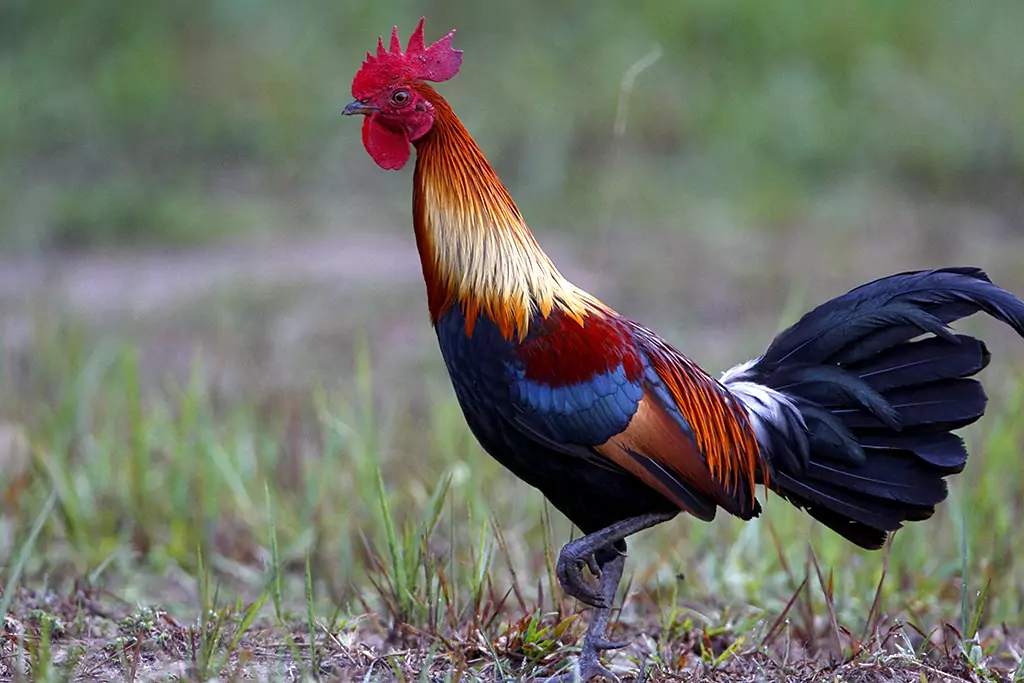Exploring the Enchanting Shoolpaneshwar Wildlife Sanctuary
The Shoolpaneshwar Wildlife Sanctuary, nestled in the western state of Gujarat, India, is a hidden gem that beckons nature enthusiasts and wildlife lovers alike. This sprawling sanctuary is a testament to nature’s grandeur, boasting a rich biodiversity and an array of captivating landscapes that leave visitors awestruck. In this article, we will embark on a virtual journey through the Shoolpaneshwar Wildlife Sanctuary, delving into its fascinating features and uncovering the secrets it holds.
A Sanctuary in the Lap of Nature
The Shoolpaneshwar Wildlife Sanctuary is situated in the Narmada district of Gujarat, bordering the Indian state of Madhya Pradesh. Spanning over 607 square kilometers, this sanctuary is an integral part of the larger eco-system, including the Narmada Wildlife Sanctuary, and plays a crucial role in preserving the region’s natural balance.
Important Animals
The Shoolpaneshwar Wildlife Sanctuary in Gujarat is home to a variety of important and diverse wildlife species. Some of the notable animals found in this sanctuary include:
- Leopard: Leopards are the apex predators in the sanctuary and are known for their elusive behavior. They are well adapted to the forested terrain.
- Sloth Bear: Sloth bears are another significant mammal species in the area. They are recognized by their shaggy fur and are primarily insect-eaters.
- Indian Pangolin: The Indian pangolin, a scaly anteater, is a unique and threatened species that inhabits the sanctuary. They are known for their protective scales.
- Barking Deer: Also known as the Indian muntjac, barking deer are a common sight in the sanctuary. They are small, shy herbivores.
- Four-Horned Antelope: This distinctive antelope species is named for its four-pronged horns. It is native to the region and an important herbivore.
- Indian Giant Squirrel: The Indian giant squirrel is a colorful and large tree-dwelling squirrel species found in the sanctuary’s lush forests.
- Indian Python: This non-venomous snake species can be found in the sanctuary, often near water bodies. They are known for their impressive size.
- Various Birds: Shoolpaneshwar Wildlife Sanctuary is also a haven for birdwatchers. You can find a wide range of avian species, including hornbills, woodpeckers, eagles, and more.
- Reptiles and Amphibians: The sanctuary is home to various reptiles and amphibians, including crocodiles, turtles, and frogs.
- Invertebrates: The region’s diverse ecosystems support a multitude of invertebrates, including butterflies, spiders, and insects.
It’s important to note that wildlife sightings in a sanctuary can be unpredictable, and patience is often required to observe these animals in their natural habitat. Visitors should always respect the rules and guidelines of the sanctuary to ensure the well-being and conservation of these important wildlife species.
Flora and Fauna
A Verdant Wonderland
As we venture deeper into the sanctuary, we encounter a mesmerizing variety of flora. Lush deciduous forests dominate the landscape, with teak, bamboo, and sal trees forming a dense canopy. The sanctuary is also famous for its diverse medicinal plants and herbs, some of which hold great importance in Ayurvedic medicine.
The Avian Delights
Birdwatchers will find Shoolpaneshwar a haven, with over 150 species of birds, including the vibrant Indian pitta, the majestic crested serpent eagle, and the elusive paradise flycatcher. The melodious symphony of chirping and the vivid plumage of these feathered residents make it a birdwatcher’s paradise.
Mammalian Marvels
The sanctuary is not only about birds and trees; it’s also home to an impressive array of mammals. Here, one can spot leopards, sloth bears, Indian giant squirrels, and several species of deer, including the graceful sambar and the spotted chital.
Adventure Amidst Wilderness
Trekking Trails
For adventure seekers, Shoolpaneshwar offers thrilling trekking trails that lead through dense forests, across gurgling streams, and up the rocky terrain. The trails cater to both beginners and seasoned trekkers, promising an adrenaline rush and a close encounter with nature.
Riverside Retreats
The sanctuary is crisscrossed by the pristine waters of the Narmada River, providing an ideal setting for camping and picnicking. The serene riverside locations offer a tranquil escape from the hustle and bustle of city life.
Conservation Efforts
Preserving Precious Ecosystems
Shoolpaneshwar Wildlife Sanctuary is not just a tourist destination; it is also a hub for conservation efforts. The sanctuary plays a vital role in preserving the biodiversity of the region and protecting endangered species, making it an essential part of India’s conservation landscape.
Conclusion
In conclusion, the Shoolpaneshwar Wildlife Sanctuary is a testament to the beauty and grandeur of nature. Its rich biodiversity, scenic landscapes, and adventure opportunities make it a must-visit destination for anyone seeking a rendezvous with the wild. So, pack your bags and embark on a journey to this enchanting sanctuary that promises an unforgettable experience amidst the wonders of nature.
Shoolpaneshwar Wildlife Sanctuary Ticket Price
Please note that ticket prices and other details may have changed since then, so it’s a good idea to check the latest information from official sources or local authorities. Typically, the ticket prices for wildlife sanctuaries in India vary for Indian and foreign tourists.
For Indian tourists, the ticket prices may have been in the range of:
- Adults: Rs. 50 to Rs. 100 (varies by sanctuary)
- Children (usually below a certain age): Rs. 10 to Rs. 25
- There might be additional charges for cameras and vehicles.
For foreign tourists, the ticket prices are usually higher, often in the range of:
- Adults: Rs. 200 to Rs. 500 (varies by sanctuary)
- Children: Rs. 100 to Rs. 250
- Again, there might be additional charges for cameras and vehicles.
Where to Stay
There are several options for accommodation in the surrounding areas. Here are some places where you can stay:
- Dediapada: Dediapada is the nearest town to the Shoolpaneshwar Wildlife Sanctuary and offers a few budget and mid-range accommodation options. It’s a convenient choice for those looking to stay close to the sanctuary.
- Rajpipla: Rajpipla is a slightly larger town located not far from the sanctuary. It offers a range of hotels and guesthouses, including some with more amenities and comfort compared to Dediapada.
- Bharuch: Bharuch is a larger city located at a greater distance from the sanctuary, but it provides a wider range of accommodation options, including hotels, resorts, and guesthouses. It’s a good choice for those who prefer more upscale lodging.
- Narmada District: You can also explore options within the Narmada district, where you might find homestays, eco-resorts, and other unique accommodation experiences that offer a closer connection to nature.
- Online Booking Platforms: Consider using online booking platforms such as Booking.com, Agoda, or Airbnb to find accommodation options that suit your preferences and budget. These platforms often have a variety of choices in nearby towns and cities.
Remember to book your accommodation in advance, especially if you plan to visit during peak tourist seasons. Additionally, check for reviews and ratings to ensure that the place you choose meets your expectations in terms of comfort and amenities.
Photos
FAQs
Is Shoolpaneshwar Wildlife Sanctuary open year-round?
Yes, the sanctuary is open year-round, but it’s best to visit during the cooler months between October and March.
Are there any accommodations available within the sanctuary?
Yes, there are forest rest houses and eco-camps available for visitors, but it’s advisable to book in advance.
Can I spot tigers in Shoolpaneshwar Wildlife Sanctuary?
While tigers are not common here, leopards are occasionally spotted. The sanctuary is better known for its diverse bird and mammal species.
Are there any restrictions on photography within the sanctuary?
Photography is allowed, but it’s essential to follow the guidelines to avoid disturbing the wildlife.
What should I carry when visiting the sanctuary?
Visitors should carry essentials like water, first-aid kits, and comfortable clothing for trekking. Binoculars and a camera are also recommended for a more enjoyable experience.







